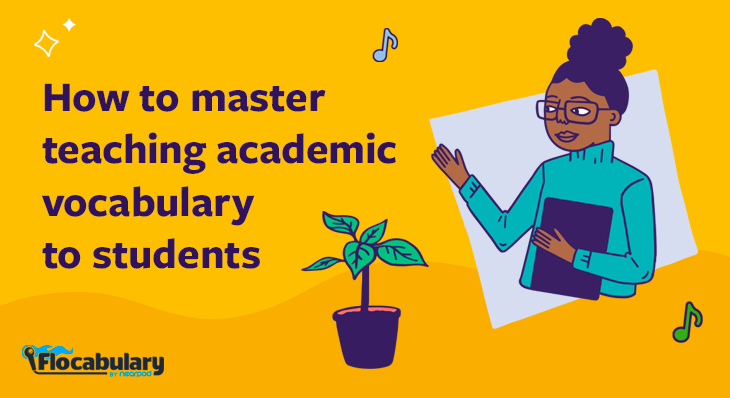
How to master teaching academic vocabulary to students
Picture a scenario where every student possesses the academic vocabulary needed to understand content through reading and listening, and to showcase their expertise through speaking and writing. This transformation would be awe-inspiring and a significant stride towards achieving educational fairness for all.
Unfortunately, we all know that isn’t what we observe in many of our classrooms today. Students enter our schools with various cultures, personalities, interests, learning abilities, and vocabulary levels. As a former teacher and principal, I quickly realized this. As educators, it is important that we prioritize this student need through strategies that also pique student engagement.
Captivate students and make learning experiences memorable and interesting through Flocabulary. Sign up below to access the activities and lessons shared in this blog post!
What is academic vocabulary, and why is it important?
Academic vocabulary is the language used in our classrooms, textbooks, and other instructional materials and presented on students’ exams. Essentially, it is the language of instruction, and when students are lacking a strong academic vocabulary, it can have a significant impact on their ability to achieve and progress on their educational journey. A strong vocabulary is absolutely fundamental to a student achieving academic success, and therefore, as educators, we must focus on and prioritize vocabulary development as early as possible and throughout students’ educational experiences. There are three types of common academic vocabulary that are at the core of learning content areas: Tier 1, Tier 2, and Tier 3.

Types of academic vocabulary
Tier I Vocabulary
Vocabulary is often divided into three tiers. Tier I Vocabulary includes the basic words that commonly appear in spoken language. They are typically not specific to academic texts and are more context-based. These vocabulary terms, such as cat, happy, walk, and run, are often learned through everyday conversation and therefore don’t usually require direct instruction.
Tier II Vocabulary
Tier II Vocabulary includes high-frequency words that we tend to see across a variety of domains. They are often more precise or nuanced versions of Tier I words and are critical to reading comprehension. Students can expect to see them in many academic texts that they encounter, but they are not as common in everyday speech. Some examples might include: analyze, infer, comprehend, and require. Given their frequency, students can benefit from explicit instruction of these words.
Tier III Vocabulary
Tier III Vocabulary includes low-frequency, domain-specific words. These terms are often taught via explicit instruction, as they are critical to understanding content in specific academic subject areas. Some examples might include: alliteration, photosynthesis, linear equation, and cuneiform.
What happens when students lack academic vocabulary?
First of all, vocabulary knowledge is paramount to reading comprehension. When students don’t know what words mean, it becomes a barrier to their understanding of the text and can quickly hinder their learning experience across the curriculum. Academic vocabulary is also critical to another key component of literacy: writing skills. It supports students’ ability to express complex ideas and communicate their arguments effectively in writing. Without it, student writing may lack the clarity needed when completing an essay or other written assignments. Not only is this important for English language arts and English language learners, these skills are necessary to promote literacy across the curriculum.
The impact of academic vocabulary goes beyond literacy skills, according to Robert J. Marzano and Debra J. Pickering. Many critical thinking skills are dependent upon a student’s understanding of the nuances of language, and a strong vocabulary is essential to a student’s ability to analyze, evaluate, and infer from the information they read. In addition to critical thinking skills, vocabulary is also integral to test performance. Standardized assessments often use academic vocabulary words, so students who lack the vocabulary may struggle with comprehending and answering questions accurately.
Each academic subject has its own specific terminology that is critical to understanding and demonstrating mastery of new concepts, and we must prioritize exposure and explicit instruction of this academic language in order to support both students’ short-term and long-term academic success.
How to successfully teach students academic vocabulary
1. Multiple exposures and contexts
Students need as many as 17 exposures to a word in a range of different contexts for that word to move into their long-term memory (Marzano). Exposures refer to the number of times a student encounters, interacts with, or uses a new vocabulary word. Each exposure can take a different form, such as: hearing the word in a lecture or conversation, reading the word in a text, using the word in writing, engaging in vocabulary games or activities, or participating in discussions with teachers or peers around the word’s meaning, synonyms, antonyms, etc. It’s generally insufficient for a student to hear or read a word once simply, and students need varied and frequent interactions with new vocabulary to ensure robust learning.
Flocabulary lessons include multiple exposures to key vocabulary, especially Tier II and Tier III terms. These engaging video lessons boost students’ attention, curiosity, interest, enthusiasm, and motivation. The music videos provide an engaging and memorable first exposure by utilizing rhyme and rhythm as powerful mnemonic devices. Students are often so engaged by the videos that they will even watch them additional times independently. There are accompanying lyrics with bolded Tier III vocabulary that can be read digitally or printed out as well. Each lesson also includes eight student activities that further increase exposure.
Richmond Public Schools (RPS) has embraced Flocabulary as a catalyst for elevating student engagement, spurred by remarkable strides in vocabulary acquisition across subjects. With a focus on targeted vocabulary strategies utilizing Flocabulary’s activities and captivating hip-hop videos, RPS witnessed unprecedented growth in test scores—a 75% increase in reading and 90% in math. RPS’ story exemplifies how innovative approaches to vocabulary instruction using tools like Flocabulary can drive genuine academic success and ignite a passion for learning.
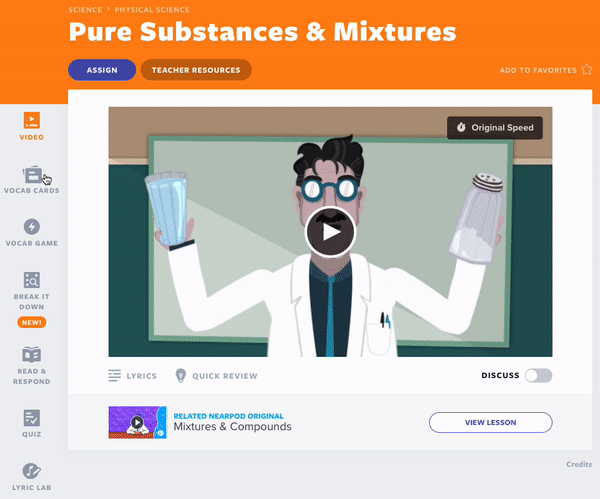
2. Provide efficient practice opportunities
Students need multiple opportunities to use their word knowledge and to apply it in various contexts (Beck). We know that memorizing definitions does not lead to effective learning of words. You can use a Flocabulary video to introduce vocabulary words and have students go through the lesson sequence to continue practicing.
These academic vocabulary activities and assessments accompany all Flocabulary videos:
- Vocab Cards: Consider these digital flashcards where students define the academic words in their own words, and draw a picture to reinforce their understanding.
- Vocab Game: Students answer questions about the lesson’s vocabulary, and build a beat in this step-by-step process, unlocking new sounds with each correct answer.
- Break It Down: Students answer questions about the content and academic vocabulary they’ve learned. They select video clips to cite evidence for their answers.
- Read and Respond: Students read texts that include the vocabulary and answer text-dependent questions that give real-time feedback.
- Quiz: Students complete one final check for understanding to ensure they’re mastering the content and vocabulary.
- Lyric Lab: Students create by demonstrating what they’ve learned in a creative and inspiring space, where they utilize various features to create their own lyrics and songs about the key vocabulary and concepts learned.
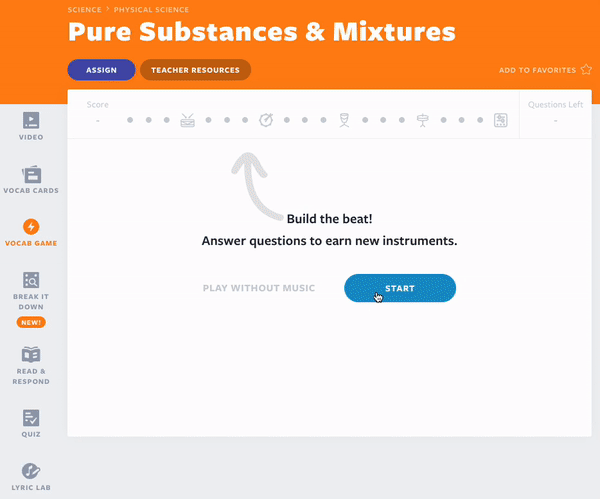
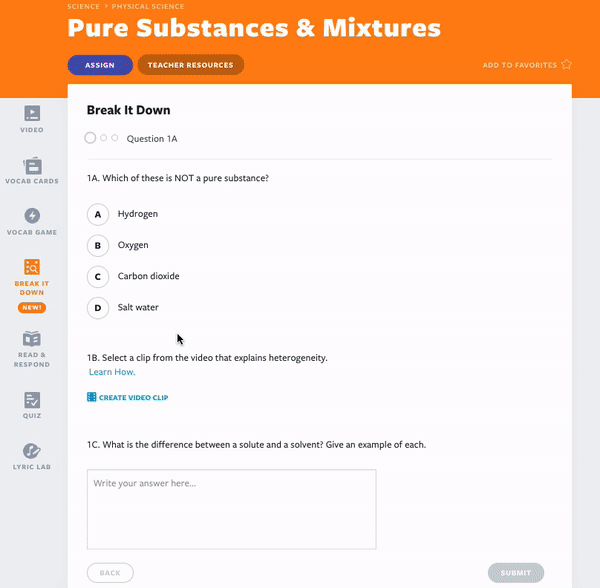
3. Explicit vocabulary instruction for new words
Incidental or indirect word encounters are insufficient to build students’ vocabulary (Beck). It is critical that educators provide explicit instruction on new words. This strategy often includes giving a definition, providing a visual aid, using the word in a sentence, exploring synonyms and antonyms, sharing illustrations and counterexamples of the word, and having students put the definition into their own words.
Flocabulary’s video lessons provide a great introduction to teaching academic vocabulary, and they do so within the context of the concept being learned, not in isolation. In the Lyrics example below, you’ll notice that students hear and see the word heterogeneous, as well as a definition and example:
Lyrics from the Pure Substances & Mixtures lesson:
“There’s two types of mixtures,
The names are long like boa constrictors.
The first is heterogeneous,
Think about how cookie dough ice cream is.
The particles are not evenly mixed,
Like trail mix or a bowl of Trix.”
Vocab Cards also support explicit instruction by providing the pronunciation, the part of speech, a definition, an example sentence, a visual aid, and sometimes synonyms for each key vocabulary term.
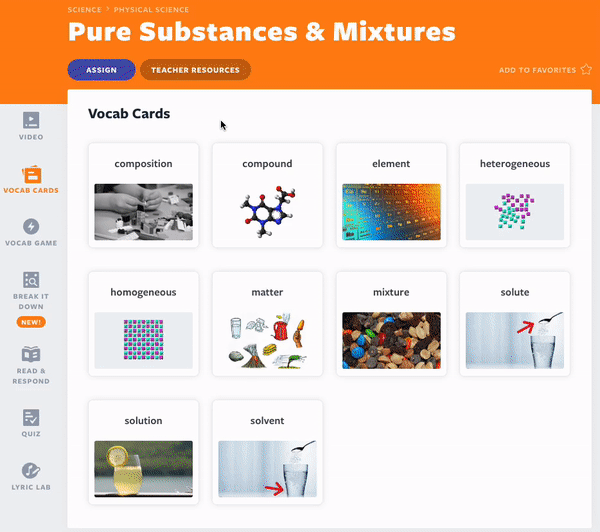
4. Use culturally responsive teaching practices
Culturally responsive teaching strategies incorporate students’ cultural identities and lived experiences in authentic ways and help build relationships and trust that promote effective information processing (Ladson-Billings; Hammond).
Flocabulary music videos are rooted in hip-hop for one simple reason: Hip-hop is the most popular genre for youth across the world, regardless of language and location. If you want the odds in your favor that your lesson will resonate with all or most of your students, use hip-hop to deliver your standards-aligned content.
Flocabulary songs are written and performed by artists and musicians who live and breathe the art form daily, creating an authenticity that is familiar and irresistible to students. As a bonus, hip-hop is also the wordiest genre, containing more than two times as many words per song as other genres. In an instructional day where time is always limited, imagine how many more Tier I, II, and III words students can be exposed to via songs.
When using vocabulary lists with elementary, middle school, or high school students, incorporating culturally responsive teaching can make the learning experience more relevant and engaging. All Flocabulary lesson videos have a vocabulary list, and by allowing students to choose a word from the list that resonates with their own backgrounds or experiences to dive deeper into, educators can help foster meaningful and academic connections to the material.
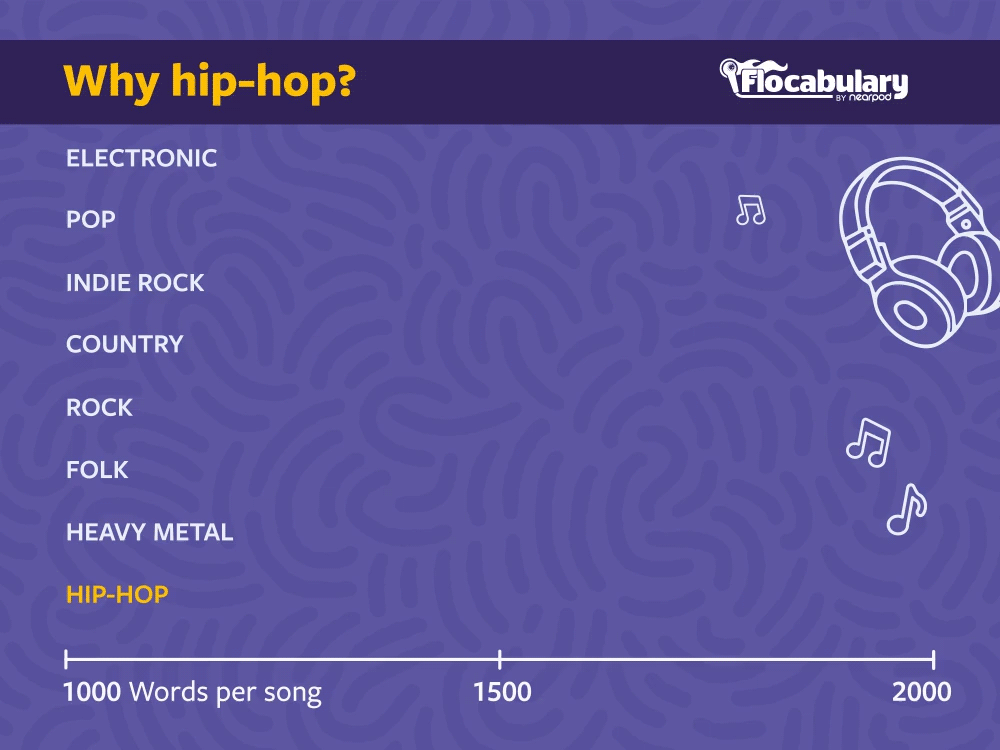
Start teaching academic vocabulary with Flocabulary
In today’s educational landscape, the importance of building academic vocabulary cannot be overstated. As the backbone of classroom instruction, textbooks, and assessments, these academic word lists form the pillars of effective learning and communication. With vocabulary divided into three critical tiers, each serves a unique role – from the everyday words of Tier I to the subject-specific terms of Tier III. However, without intentional exposure, instruction, and engaging practices like those offered by Flocabulary, students might find themselves at a disadvantage. As educators, our mission should remain clear: Prioritize and innovate vocabulary instruction to ensure every learner’s path to academic success is paved with understanding and confidence.
Captivate students and make learning experiences memorable and interesting through Flocabulary. Sign up below to access the activities and lessons shared in this blog post!
